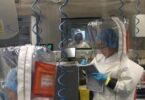 The ban on federal funding for embryonic stem-cell research is back in effect for now. U.S. District Chief Judge Royce C. Lamberth issued a temporary injunction on Monday, putting a damper on plans by the National Institutes of Health (NIH) to increase funding for embryonic stem-cell research.
The ban on federal funding for embryonic stem-cell research is back in effect for now. U.S. District Chief Judge Royce C. Lamberth issued a temporary injunction on Monday, putting a damper on plans by the National Institutes of Health (NIH) to increase funding for embryonic stem-cell research.
Soon after his inauguration, President Barack Obama lifted the restrictions on federal funding for embryonic stem cell research that President Bush had put in place in 2001, opening the door wide for US taxpayers to fund experimentation on human embryos. In the recent lawsuit, the NIH was accused of illegally funding embryonic stem-cell research and diverting money away from research that uses adult stem cells in therapies.
The Dickey-Wicker Amendment to the federal budget bans federal funds from being used for research that destroys human embryos. The amendment has been attached to the budget every year since 1996. The past three administrations have allowed federal funds to pay for research using embryonic stem-cells as long as private funds handled the actual destruction of the embryos. Judge Lamberth ruled that, no, the research funding could not be divided neatly that way.
“ESC (embryonic stem-cell) research is clearly research in which an embryo is destroyed,” Judge Lamberth said. He added: “To conduct ESC research, ESCs must be derived from an embryo. The process of deriving ESCs from an embryo results in the destruction of the embryo. Thus ESC research necessarily depends upon the destruction of a human embryo.”
Therefore, research that receives federal funds cannot be involved in ESC experimentation.
Labs across the country are putting their ESC research on hold, but aren’t throwing out existing experiments. The Justice Department is appealing the ruling, and further litigation will have to fully settle the matter. In the meanwhile, ESC research backed by private funds is still free to continue.
While embryonic stem cells are notably versatile, their use can be tricky. Not only does the research destroy human life at the embryonic stage of development, prompting serious moral objections, but embryonic stem cells can cause tumors and are often rejected by the patient’s body. Some researchers are determined to use embryonic stem cells despite these serious problems, but plenty of companies have simply decided to pursue research that avoids harming embryos.
In the meanwhile, adult stem-cell therapies continue to show progress.
Cancer Reduction: RNL BIO Co., Ltd, announced July 27th that fat cell-derived stem cells have been shown to suppress cancer in preclinical tests. Mice infused with melanoma were found to have cancer reduction compared to the control group when they were treated with human fat-derived stem cells.
Repairing Hearts: The Mayo Clinic in Rochester has been having success in repairing hearts damaged by myocardial infarctions through the use of stem cells derived from bone-marrow.
Incurable Diseases: Seven children infected with the (sometimes fatal) blistering disease recessive dystrophic epidermolysis bullosa were treated with stem-cells from their bone-marrow. Between 30 and 130 days after the stem cells were implanted, the children’s wounds improved and they showed a reduction in blister formation.
Stories abound of successful stem cell therapies using alternatives to stem cells from human embryos. While those who have been working on embryonic stem-cell research now find themselves in limbo, plenty of beneficial research is able to continue right now without destroying human life.
“I will praise thee; for I am fearfully and wonderfully made: marvellous are thy works; and that my soul knoweth right well..” – Psalm 139:14







